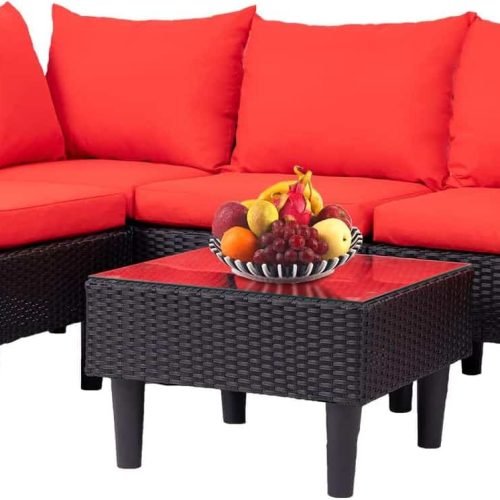How to get the good bugs to take up residence in your garden this year!
Hey fam J.V Charles again. I’ve made our garden a happy place for helpful bugs like ladybugs and wasps. By letting a few pests grow in the right spots and planting the right flowers, I made a place where bugs help keep everything in balance. This keeps our garden free of pests the natural way.
It’s simple. Know what good bugs need and make your garden their perfect home. With a bit of effort, you can have a flourishing garden full of helpful insects. They’ll make sure your plants stay safe and your garden is full of life.
Key Takeaways
- Allowing a few pests to multiply in strategic areas can attract beneficial insects like ladybugs, spiders, and parasitic wasps to your garden.
- Growing plants that provide nectar and pollen sources for beneficial insects helps to sustain them throughout the growing season.
- Creating a diverse, insect-friendly garden promotes ecological balance and reduces the need for harmful pesticides.
- Understanding the role and behaviors of beneficial insects is key to identifying them and allowing them to thrive in your garden.
- Organic pest control strategies that work in harmony with nature, such as encouraging natural predators, can effectively manage pests without chemicals.
Understanding the Role of Beneficial Insects
Gardeners try to stop pests from hurting our plants. But, there are many beneficial insects that can keep our gardens healthy. Let’s learn about these important helpers in pest control.
Ladybugs: Voracious Aphid Predators
The ladybug is known for eating aphids. Adults can eat up to 50 aphids a day. Their babies, which look like little alligators, can eat up to 400 aphids! Plant flowers to attract these useful bugs to your garden.
Lacewings: Delicate Yet Deadly Hunters
Lacewings look pretty but they are great at hunting garden pests. Their babies eat aphids, caterpillars, and many other pests. This makes lacewings amazing helpers in the garden.
Parasitic Wasps: Tiny Warriors Against Caterpillars
Even though parasitic wasps are small, they are mighty in the garden. They lay their eggs on or in pests like corn earworms. When the eggs hatch, the wasp babies eat the pest from the inside. This stops the pest from damaging your plants.
Knowing about ladybugs, lacewings, and parasitic wasps helps us use natural pest control. We can make our gardens healthy by supporting these beneficial insects. Keep reading to find out more ways to welcome and help them.
Creating an Insect-Friendly Garden
I love gardening and made my space an insect friendly one. It’s a place where helpful insects can live well. I did this by making sure they have food, water, and shelter. This makes my garden both pretty and buzzing with life.
Providing Nectar and Pollen Sources
I grow many types of flowers that bloom at different times. This keeps a steady supply of food for insects. I also plant small flowers that are perfect for these insects.
Offering Water and Shelter
It’s not just about flowers. Insects need water and safe places too. I let water sprinkle from above, form puddles, and arranged wet leaves. These help insects stay cool, find water, and hide.
My garden is now a great place for important insects to live and eat pests. It improves how my garden looks and how it works, creating a happy home for all.
Attracting Pollinators and Promoting Biodiversity
I plant a lot of different plants in my garden. They bring in many helpful bugs. These bugs help keep the garden healthy for birds, small mammals, and more. They do this by taking care of pollination and eating pests.
The Importance of Native Plants
Adding native plants has been great for my garden. They attract native bees, butterflies, and other pollinators well. Since they grow at the best times for these insects, there’s always food for them.
Diverse Plantings for a Balanced Ecosystem
Having many types of plants is important too. It helps good bugs, like ladybugs and lacewings, to live where bad bugs are. This way, the garden can take care of itself naturally. Each plant and bug has a job to do.
How to Attract Beneficial Insects to Your Garden
Getting good bugs in your garden helps with organic pest control. It also makes your garden a healthy balanced ecosystem. I’ve seen great results by making a aphid nursery in my garden.
Establishing an Aphid Nursery
I let some aphids grow on certain plants like shasta daisies and lupines. They become a food source for beneficial insects like ladybugs, spiders, hoverflies, and parasitic wasps. This is a way to make sure these good bugs stay to balance my garden.
Growing Companion Plants
Other than the aphid nursery, I plant lots of companion plants. These plants provide nectar and pollen for the beneficial insects. It’s really helpful to have plants from the carrot and aster families. They keep the good bugs coming throughout the year.
Avoiding Pesticides and Chemicals
To really bring in the good insects, I don’t use pesticides and harsh chemicals. Those can hurt the bugs I want in my garden. I use organic methods and deal with bugs myself when needed.
With these methods – the aphid nursery, companion plants, and no chemicals – my garden is lively. It’s full of beneficial insects that take care of pests the natural way.
Identifying Friend from Foe
Being a gardener means telling good insects from bad ones. Look closely at their actions. Are they hurting plants or helping them?
Observing Insect Behavior
Watch the insects in your garden. See how they move and where they are. Look for beneficial insects such as ladybugs and lacewings. They help your plants.
Online Resources and Identification Tools
Need help with an insect’s name? Take a good photo. Use online resources for insect identification or ask your local experts. Universities and groups can help. It’s key not to kill all bugs. Some are needed for a healthy garden.
Organic Pest Control Strategies
If the good bugs in your garden can’t keep up with pests, try some organic pest control methods. These ways are safe and keep the garden’s ecosystem healthy. They avoid using chemicals that can hurt the environment.
Encouraging Natural Predators
Encouraging natural enemies in your garden is a great organic pest control tip. Birds, reptiles, and amphibians eat many unwanted bugs. Offer them a good living space with bird baths, log piles, and thick plants.
Insecticidal Soaps and Organic Pesticides
If your garden needs more help, you can use safe soaps and pesticides. These won’t harm people, pets, or the earth. They help with big pest problems while keeping the garden’s balance.
Hand-to-Hand Combat
Sometimes, you may need to pick weeds or bugs by hand. The author is okay with this, but only as a last option. Leaving some pests can actually feed birds and help the garden’s variety.
Conclusion
My journey making an insect-friendly garden has taught me a lot. I see now how working with nature can make a big difference. I attract good insects like ladybugs, lacewings, and parasitic wasps. This helps keep the bad bugs away, all without using bad chemicals.
I gave the good bugs what they need: nectar, pollen, water, and a safe place to live. They’ve shown me how tough and smart nature is. My garden is now full of life, a place where plants and creatures help each other thrive.
I think all gardeners should get to know the bugs in their gardens. Learn which ones are helpful and which are not. Let’s use ways to control pests that don’t hurt our planet. This way, we can have great gardens and help keep the Earth healthy.
FAQ
What are some ways to attract beneficial insects to my garden?
To bring in beneficial insects like ladybugs, lacewings, and parasitic wasps, give them food, water, and a place to live. Plant lots of flowers that produce nectar and pollen. Set up water spots like puddles. And make sure your garden has a variety of plants for them to hide and rest in.
How can ladybugs, lacewings, and parasitic wasps help control pests in my garden?
Did you know ladybugs eat lots of aphids? Adults can eat 50 aphids a day, and their babies can eat up to 400. Lacewings are great too; their babies eat aphids, caterpillars, and more. Parasitic wasps lay eggs on pests like caterpillars, stopping them from causing damage.
What plants should I grow to attract beneficial insects?
Grow many different flowers that bloom at different times. This will keep the good insects fed all season long. Look for plants that have small flowers in the carrot and aster families. Native plants also help bring in pollinators, which are very good for your garden.
How can I create an “aphid nursery” to attract beneficial insects?
Want to bring in the insects that eat aphids? Let a few aphids grow on some of your plants. This makes your garden a place where ladybugs, spiders, hoverflies, and parasitic wasps can find food. By doing this, you help keep your garden’s bug population balanced.
How do I identify beneficial insects in my garden?
Watch the bugs to see what they are up to. Are they eating other bugs or protecting your plants? Take pictures of bug bites or leaf damage to help with identification. There are tools online that can help too. You can even ask for help on social media or from local gardening experts.
What organic pest control strategies can I use in my garden?
To help control pests, attract animals like birds and frogs. You can also use natural soaps or other safe pest controls. If things get really bad, you can pick bugs off your plants by hand. Just make sure to wash your hands after!






